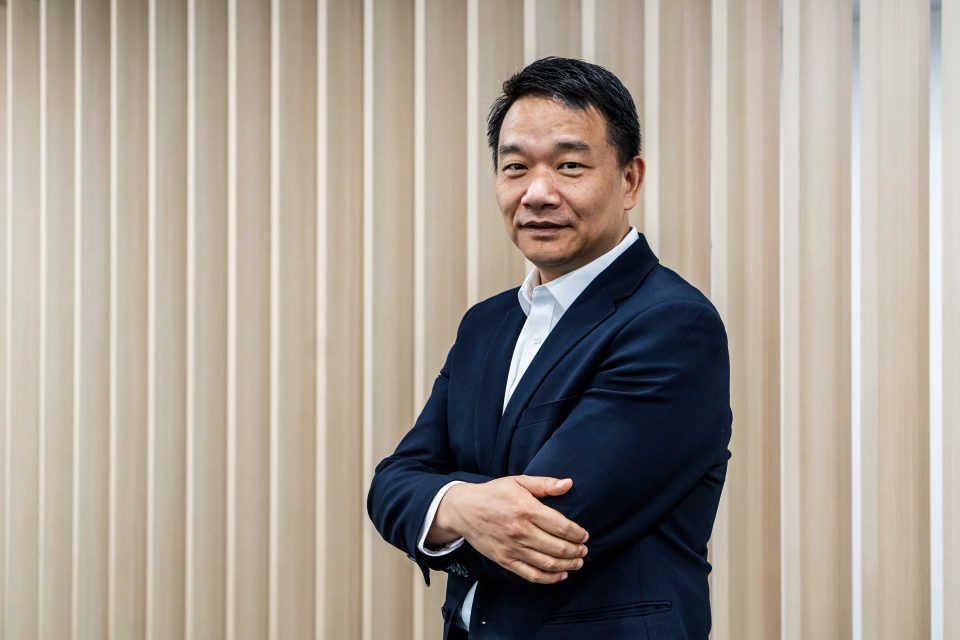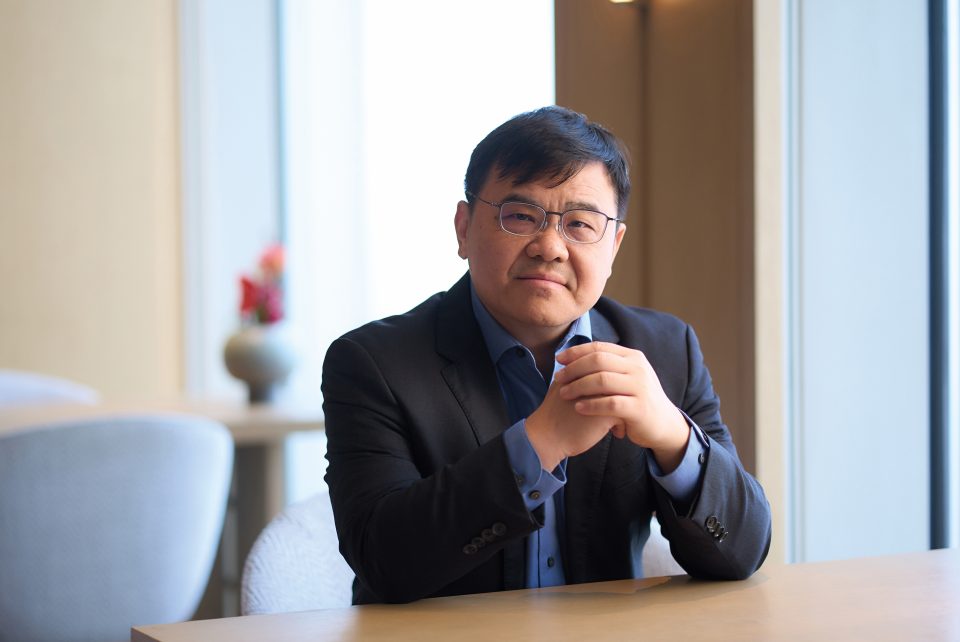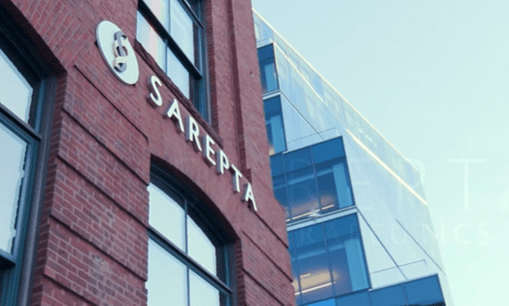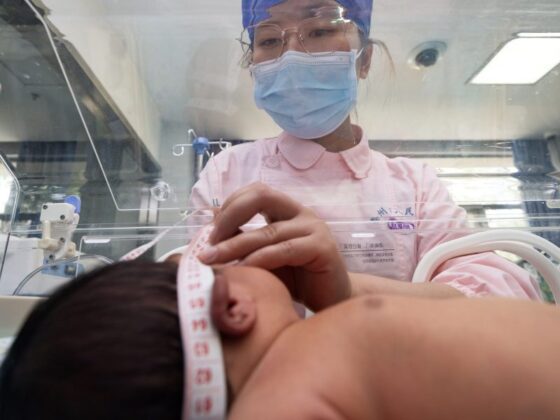High up Shenzhen’s Ping An Finance Center—the world’s fifth-tallest skyscraper—is a modest one-bedroom demo apartment. It’s well-furnished, smartly designed, and wouldn’t be out of place in one of China’s top cities.
But the floor space and furnishings aren’t what’s most interesting about the flat. There are sensors in the ceiling, meant to automatically detect when an occupant has fallen. A display in the mirror shows vital signs recorded overnight. A touch screen provides a direct connection to a concierge, portrayed by an AI-generated avatar of a young woman.
The apartment is part of Ping An’s bid for the “silver economy,” focused on helping retirees looking for health care, education, and entertainment. The insurer is targeting China’s elderly, whose numbers will soon rival the entire U.S. population.
“People who don’t have sufficient financial resources can rely on the government. People who want a bit more can choose Ping An,” says Michael Guo, Ping An’s co-CEO and the man responsible for its health care and eldercare strategy.
One of China’s largest private companies, Ping An is making its bid for health care at an opportune time. China is rapidly aging as birth rates plummet. Two decades ago, China’s median age was 32; now, it’s just past 40. Most discussions of China’s demographic crisis focus on the downside: a steep decline in China’s working-age population, the source of the country’s manufacturing and economic boom.
But China’s demographic transition is only a crisis for some. The silver economy—centered on a fast-growing, newly wealthy, newly curious, and newly independent cohort over age 50—could be worth billions to companies like Ping An that are trying to combine technology and smart design to serve an aging society.
“If you didn’t adapt to the changing nature of your population, you’re going to be left behind,” says Stuart Gietel-Basten, a demography expert at the Hong Kong University of Science and Technology. “It’s a natural shift in the population structure, and if you kept doing everything the same, you’d be an idiot.”
As the rest of the world ages, Ping An’s—and China’s—experience could show how a silver future might work.
With 242 million retail customers, Ping An, founded in 1988, dwarfs the U.S.’s largest insurance company, UnitedHealth Group, and its 152 million clients. Most of Ping An’s business is insurance—property, auto, health, and so on—but it also owns one of the country’s largest banks, Ping An Bank, and a U.S.-listed fintech platform, OneConnect.
Ping An’s rise in revenue: 8%
Ping An Insurance brought in a reported $158.6 billion in revenue in 2024, helping it jump six spots to No. 47 on this year’s Global 500.
Ping An Insurance, the group’s publicly listed arm, reported $158.6 billion in revenue last year, a nearly 8.8% rise from the year before. That puts it at No. 47 on this year’s Global 500, jumping six spots from last year. Ping An is also the second-highest-ranked private Chinese company on the list, behind e-commerce giant JD.com but ahead of other household names like Alibaba and Tencent.
Guo joined Ping An in 2019 from Boston Consulting Group, where he was a managing director and partner. He served as Ping An’s chief human resources officer and headed up its property and casualty insurance business before rising to co-CEO in 2023, now working alongside co-CEO Xie Yonglin.
China has been a tricky place to do business since Guo joined six years ago. After COVID came a brief crackdown on China’s tech sector, and the collapse of the country’s property bubble dragged down both stock markets and household consumption. Ping An’s revenue declined by 9% in 2022, then by almost 20% the following year.
Still, Guo is optimistic that Ping An, and China, have turned a corner. “We’ve done a significant amount of work de-risking some of our portfolios related to the Chinese macroeconomy,” he said, pointing to Chinese stocks and property, adding that improving optimism over the Chinese economy thanks to strong stock market performance also helped.
U.S. President Donald Trump’s global trade war, which places 55% tariffs on China, threatens to complicate things again. Ping An generates almost all of its revenue in China, whether on the mainland or in the Chinese city of Hong Kong. Yet the company’s asset portfolio is global, meaning it’s exposed to global macroeconomic shifts. (For example: Ping An is one of HSBC’s largest shareholders.)
That means the trade war is a problem for Ping An. “When we invest overseas, we have to think about which countries and industries are going to perform in the next five to 10 years. When we invest domestically, we think about which industries or regions will be impacted by the tariffs,” Guo explains.
And if China’s economy does get dragged down by Trump’s tariffs, that will rebound on Ping An. “We rely on Chinese people to buy our insurance policies, to bank with us, to buy credit cards, and so on,” he adds. “If they don’t have stable jobs, they make less money or they’re more pessimistic about the future; that will impact how they interact with financial institutions.”
Guo is now in charge of Ping An’s “health care and elderly care” strategy and its technology endeavors, putting him at the forefront of what he calls the company’s “next phase of growth.”
Ping An’s health care business is small compared with the broader group, generating just $680 million in revenue last year. Senior care services delivered just $39 million in sales—and that’s after a 400% increase. But Ping An plans to leverage its broader customer base, funneling its millions of health insurance customers to its health care and eldercare services, supercharged by its decades-long investment in AI. It’s a lucrative opportunity, if it works.
China’s population has shrunk by about 4 million since 2021. The rates of new births and marriages have also plummeted. China’s Ministry of Civil Affairs estimates the country’s elderly population will grow by about 10 million a year over the next decade.
Beijing is scrambling: By 2021, it had removed all family planning restrictions, including the infamous “one child policy.” Local Chinese governments now offer cash incentives as high as $14,000 to encourage people to have children.
China’s social safety net is underdeveloped for its sizable economy. Just over a billion people are enrolled in a state-managed basic pension, yet payouts can be as little as under $25 a month.
Corporate pensions are rare, and private pension accounts are just getting off the ground. In 2019, the Chinese Academy of Social Sciences warned that China’s state pension fund risked running out of money by 2035.
Beijing is fiddling with policy on the older end of the age spectrum. Last year, it hiked the retirement age: 63 for men; 58 and 55 for women in white-collar and blue-collar jobs, respectively.
Businesses are already adapting to a China with fewer workers and more DINKs (double income, no kids). Some markets, like pet care, are booming, while others, like dairy, are looking at an uncertain future.
Part of that shift is the silver economy: goods and services targeting China’s growing elderly population, coupled with more opportunities to continue working into old age.
“The Chinese government is trying its very best to provide a layer ov social welfare and senior care facilities,” Guo says, adding that it doesn’t have the financial strength to make sure that coverage is deep enough. Instead, the government is focused on ensuring that everyone has at least some coverage.
“If you look at the 50-year-olds of today, they’re completely different from the 50-year-olds of 30 years go.”
STUART GIETEL-BASTEN, PROFESSOR OF SOCIAL SCIENCE AND PUBLIC POLICY, THE HONG KONG UNIVERSITY OF SCIENCE AND TECHNOLOGY
But that’s not good enough for China’s middle-class families, who have built up family wealth in the decades since the country opened up its economy. “There’s a mismatch between what’s available provided by the government and what’s demanded by middle-class consumers and families. And this is where we see opportunities for Ping An to bridge the gap,” Guo explains
It’s a lucrative gap: Chinese officials predict the silver economy could grow to 30 trillion yuan ($4.2 trillion) by 2035.
Gietel-Basten doesn’t think that China’s declining population necessarily spells doom. “If you look at the 50-year-olds of today, they’re completely different from the 50-yearolds of 30 years ago,” he explains. “This is what we call ‘demographic metabolism’ of populations: getting older and smaller, but also healthier, more educated, more skilled.”
Ping An isn’t the only insurer betting on a wave of elderly customers. AIA, No. 417 on the Global 500, is also bullish on the silver economy, building new products like wealth management, wellness programs, and home care for it.
Li Dou, who heads Ping An Health, explains that there’s a “90-7-3” distribution when it comes to aging in China: 90% age at home, 7% get community-based care, and 3% go to dedicated senior care facilities.

in China’s rapidly aging
population.
Qilai Shen/Panos Pictures for Fortune
He points to a few distinct customer segments—those who live alone in China’s second or third-tier cities, after their children moved to more economically vibrant cities; “early seniors” in early retirement now free to travel and seek out new experiences; and the 80-plus crowd who need more constant care.
Thanks to its insurance business, Ping An already has access to a vast network of hospitals, pharmacies, and home care groups. But the insurance giant now owns several dozen health institutions throughout the country as well, including six tertiary hospitals. It’s also building out several “alliances” beyond just medical services to support the silver economy.
For example, Ping An now collaborates with universities to offer educational lectures to its customers who, Li says, lacked opportunities for a high-quality education in their youth. It’s also setting up package tours with cultural itineraries, health-conscious meals, and hotels designed specifically for older travelers.
This focus on entertainment suits the next generation who, thanks to having smaller families, have far more wealth to spend on themselves. “The next silver generation don’t have grandchildren, don’t have children— they’ll put more resources into themselves and look for opportunities to learn things, volunteer, and even get back to work,” says Dicky Chow, head of health care at think tank Our Hong Kong Foundation.
Still, health is an expensive business. Ping An Health made a slim $12 million profit last year, its first since being established in 2014. The company lost $46 million in 2023.
“It requires a lot of capital to acquire health care and senior care providers. You need to build senior care communities, and it’s very time-consuming to complete such projects and build up a brand in the health and senior care business,” explains Iris Tan, an analyst at Morningstar.
But Ping An’s bid for the silver economy is underpinned by a decade-long bet on AI, which it’s poured billions of dollars into, even before OpenAI’s ChatGPT forced every company to adopt the new technology.
Its AI technologies include a fraud detection tool and software that can generate an artificial voice from just a few real-world samples. Others are more spiritual, like a Buddhist chatbot accessible to Ping An employees, “which can talk to you just like a monk,” says Xiao Jing, Ping An’s chief scientist. “It’s highly dependable.”

Anthony Kwan for Fortune
And Ping An is leaning into AI for the elderly. Xiao suggests that AI is better suited for middle-aged and older users, who might appreciate the choice of AI-generated voices and avatars, whether it’s a voice and appearance that reminds them of their grandchild or an avatar resembling their professor.
And the next generation of elderly people won’t be strangers to digital technology, Chow says: “In the next 10 to 20 years, there’s going to be a drastic shift [in digital literacy].”
Beijing isn’t the only government grappling with a demographic crisis. Japan’s population has been shrinking since 2010, forcing the government to consider robotics and automation as a way to look after its aging population. South Korea has the world’s lowest fertility rate, leading local governments to consider drastic measures like government-endorsed matchmaking services.
The U.S., too, will have its own aging problems. The U.S.’s total fertility rate is at 1.6, a record low,
and hasn’t been above 2.1, the so-called replacement rate, since the early ’90s. The Population Reference Bureau projects that 82 million Americans will be over the age of 65 by 2050, nearly a quarter of the population.
China’s demographic decline is often presented as a long-term risk, but might it instead prove an opportunity? If China— which is facing a much larger elderly population with far fewer resources— can grow a vibrant silver economy, could other countries do the same?
The world’s second-largest economy is barreling ahead on automation, applying industrial robots to its manufacturing sector to make up for scarcer, more expensive—and soon rarer—workers. AI, too, might help provide care for seniors without dedicating masses of people to run health concierges and administer tests.
In that case, China’s demographic crisis may prove to be more opportunity than crisis.
This article appears in the August/September 2025: Asia issue of Fortune with the headline “Ping An’s next frontier: China’s ‘Silver Economy.’”













